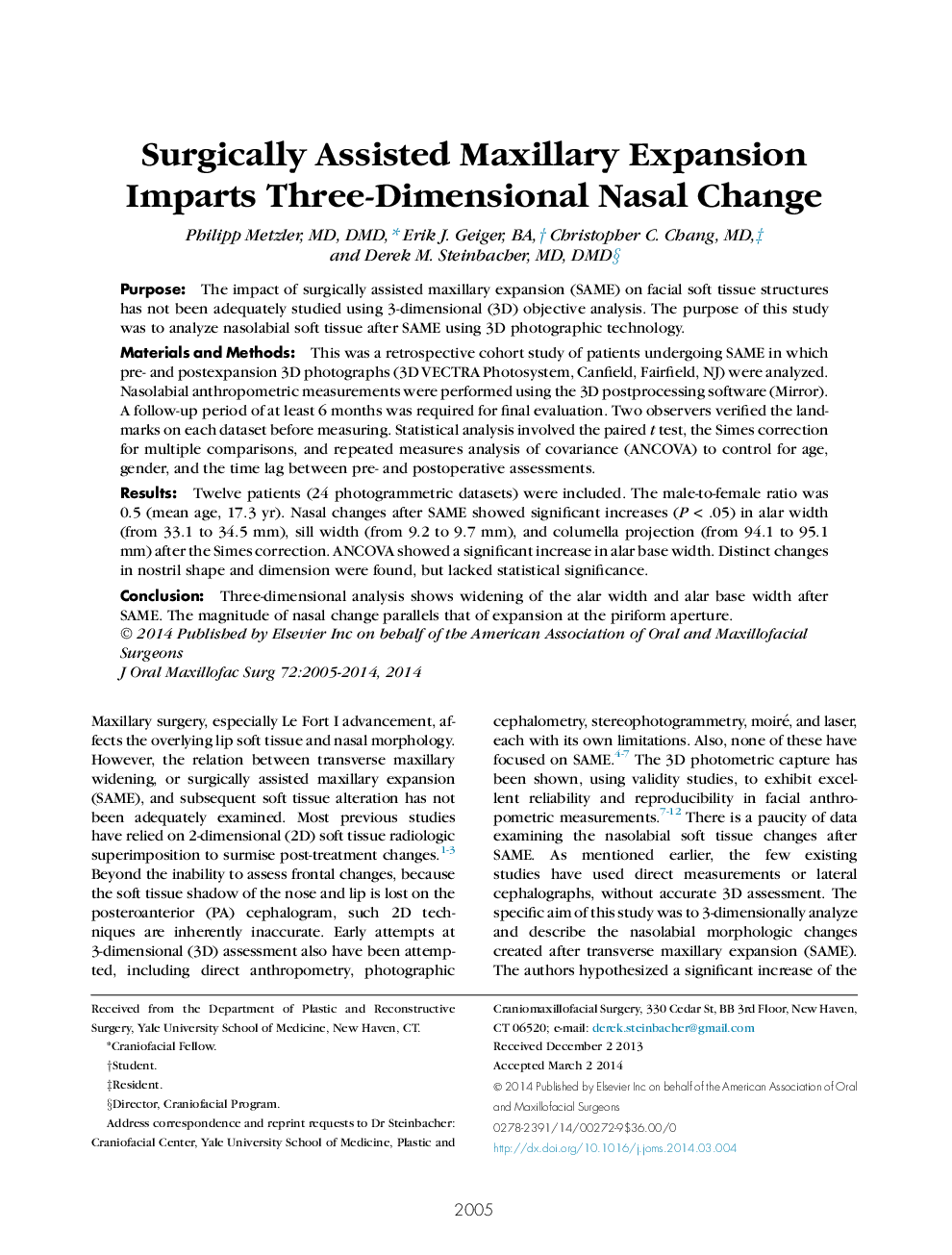| Article ID | Journal | Published Year | Pages | File Type |
|---|---|---|---|---|
| 3153470 | Journal of Oral and Maxillofacial Surgery | 2014 | 10 Pages |
PurposeThe impact of surgically assisted maxillary expansion (SAME) on facial soft tissue structures has not been adequately studied using 3-dimensional (3D) objective analysis. The purpose of this study was to analyze nasolabial soft tissue after SAME using 3D photographic technology.Materials and MethodsThis was a retrospective cohort study of patients undergoing SAME in which pre- and postexpansion 3D photographs (3D VECTRA Photosystem, Canfield, Fairfield, NJ) were analyzed. Nasolabial anthropometric measurements were performed using the 3D postprocessing software (Mirror). A follow-up period of at least 6 months was required for final evaluation. Two observers verified the landmarks on each dataset before measuring. Statistical analysis involved the paired t test, the Simes correction for multiple comparisons, and repeated measures analysis of covariance (ANCOVA) to control for age, gender, and the time lag between pre- and postoperative assessments.ResultsTwelve patients (24 photogrammetric datasets) were included. The male-to-female ratio was 0.5 (mean age, 17.3 yr). Nasal changes after SAME showed significant increases (P < .05) in alar width (from 33.1 to 34.5 mm), sill width (from 9.2 to 9.7 mm), and columella projection (from 94.1 to 95.1 mm) after the Simes correction. ANCOVA showed a significant increase in alar base width. Distinct changes in nostril shape and dimension were found, but lacked statistical significance.ConclusionThree-dimensional analysis shows widening of the alar width and alar base width after SAME. The magnitude of nasal change parallels that of expansion at the piriform aperture.
